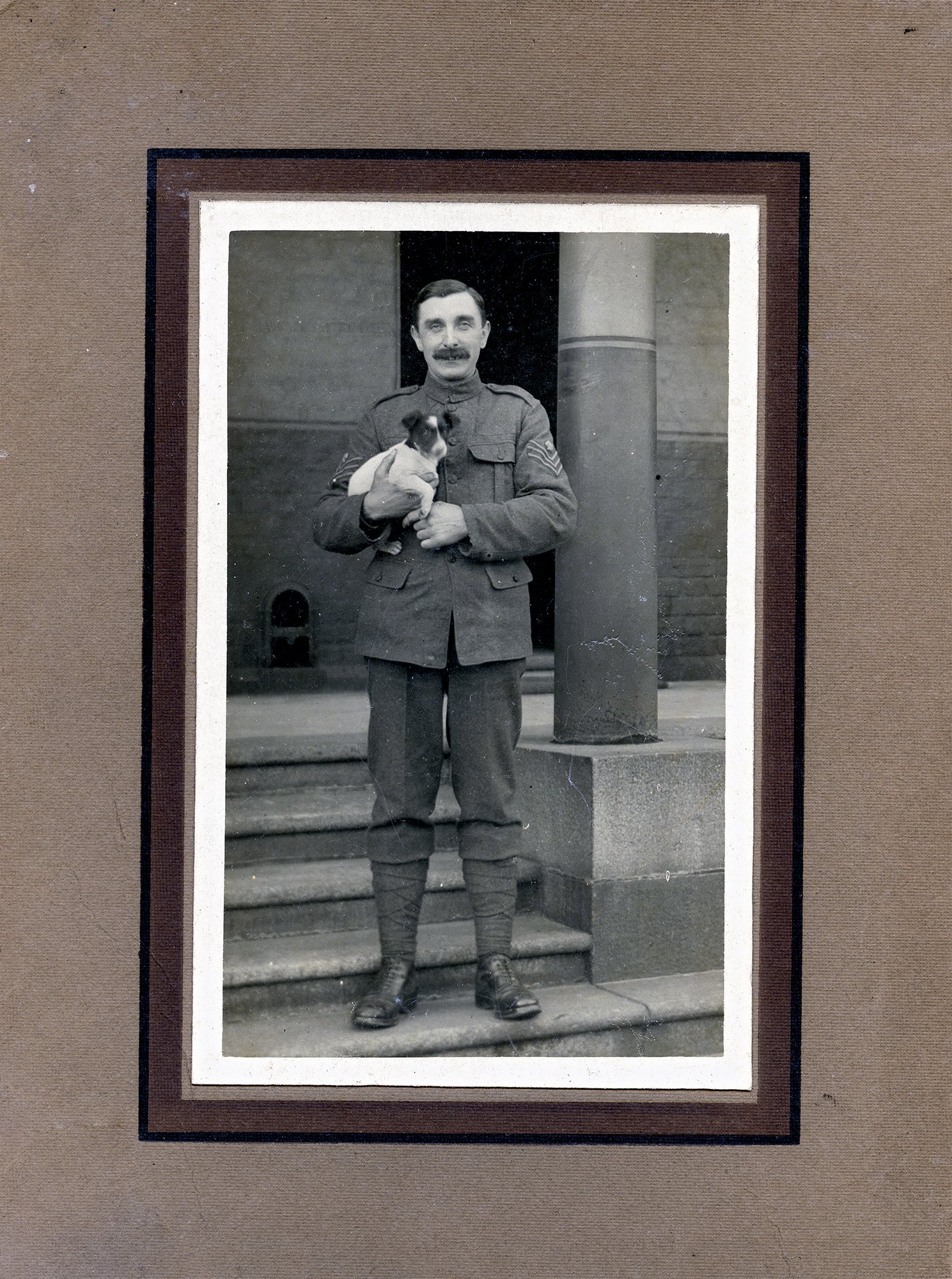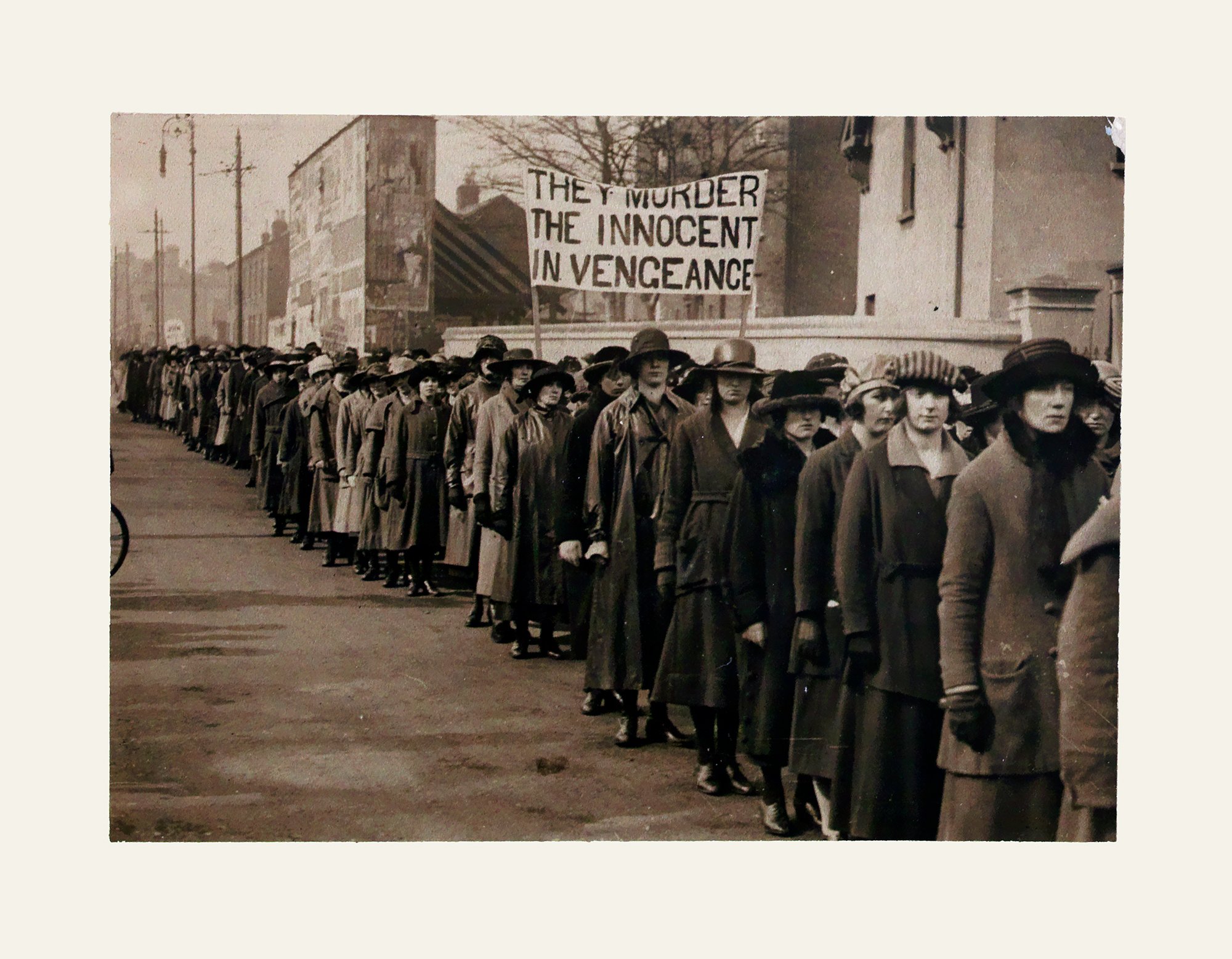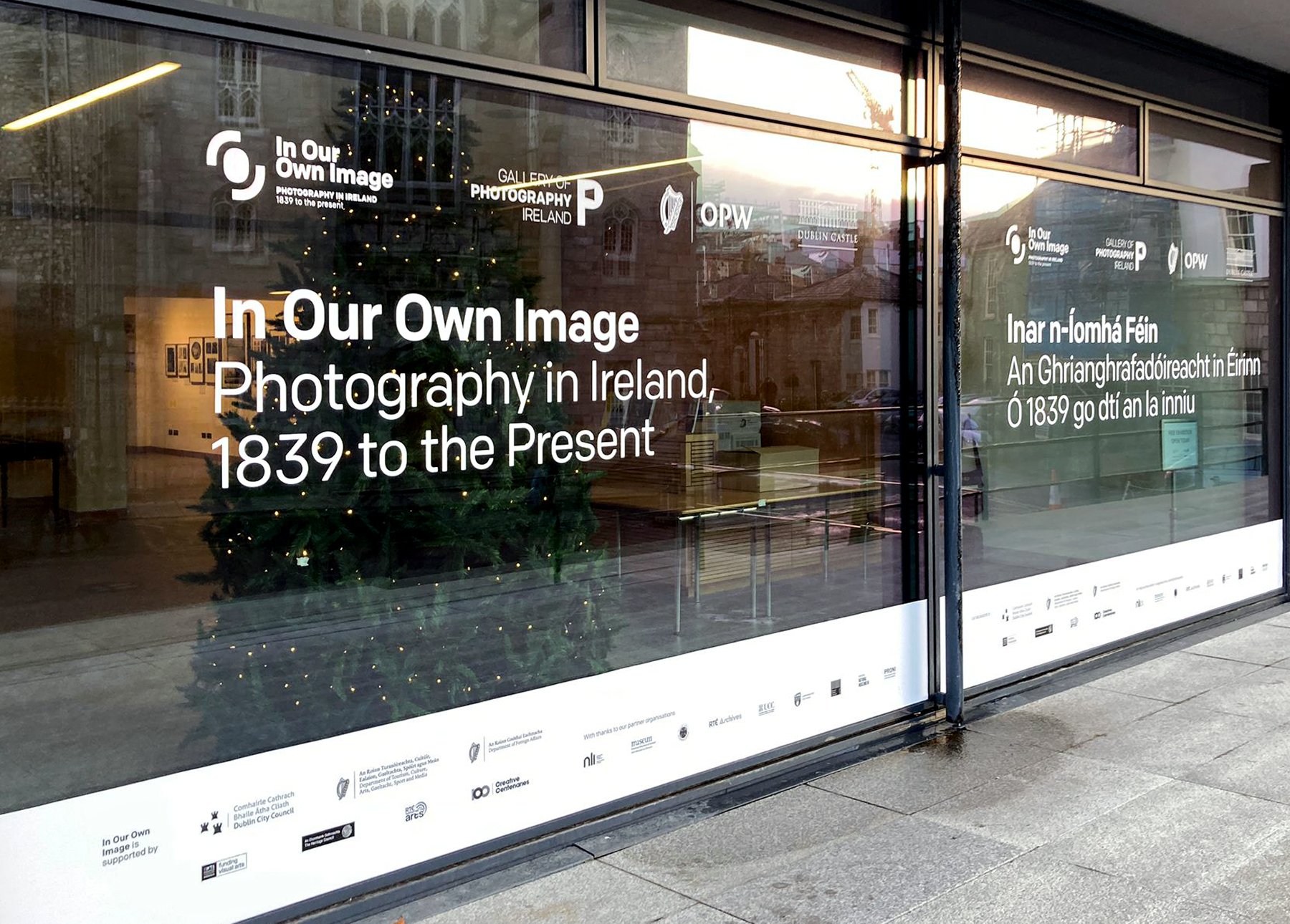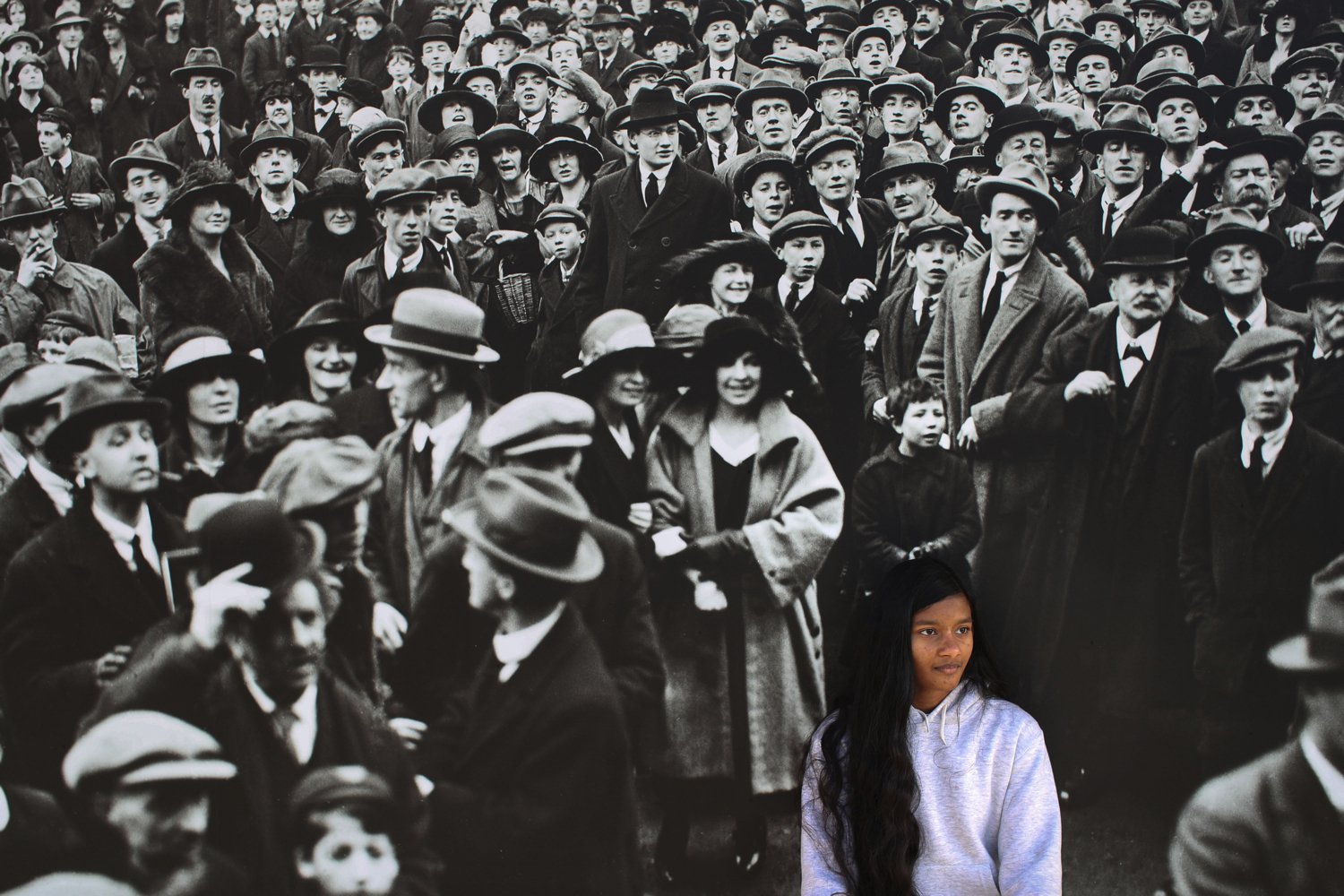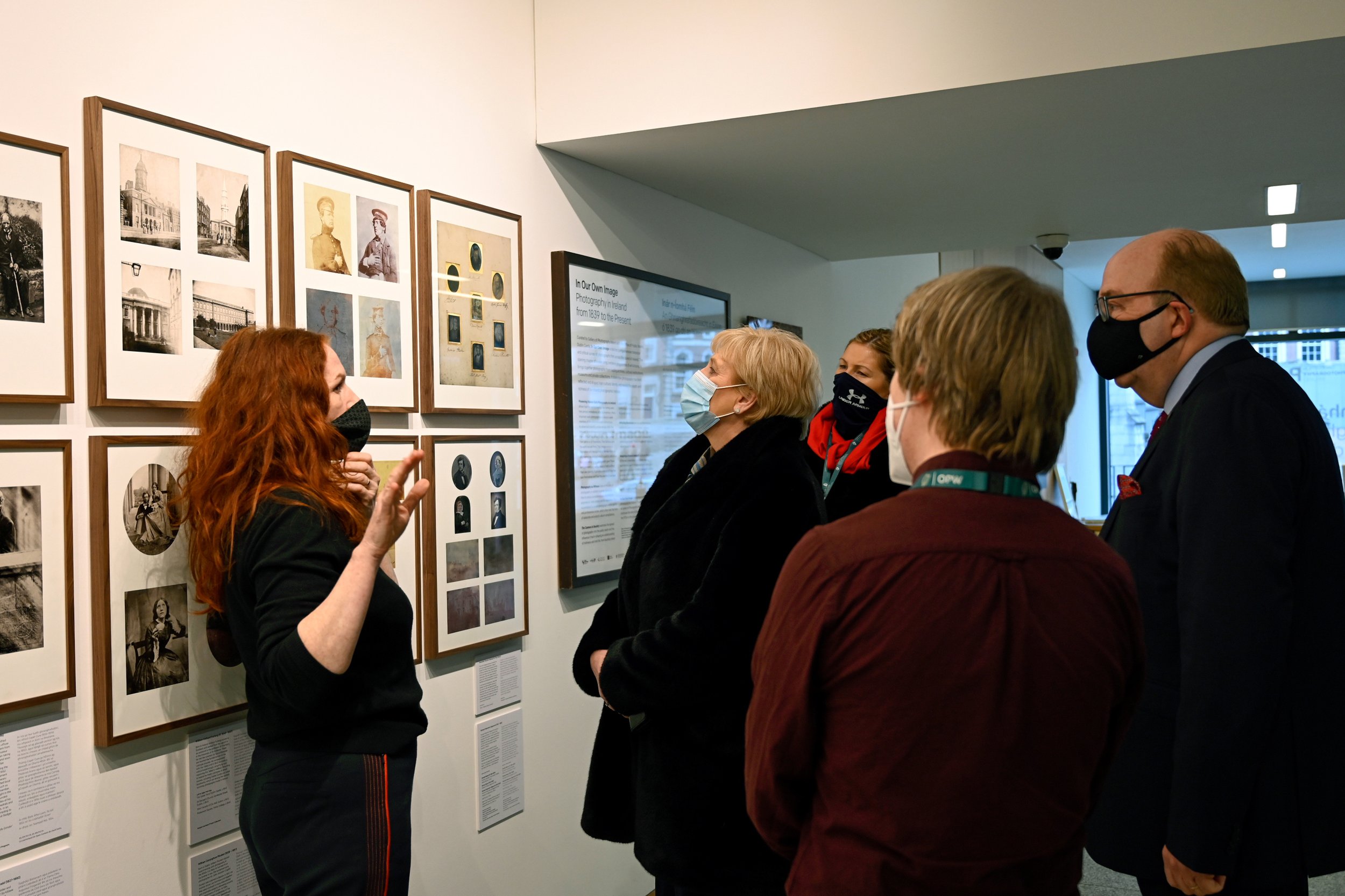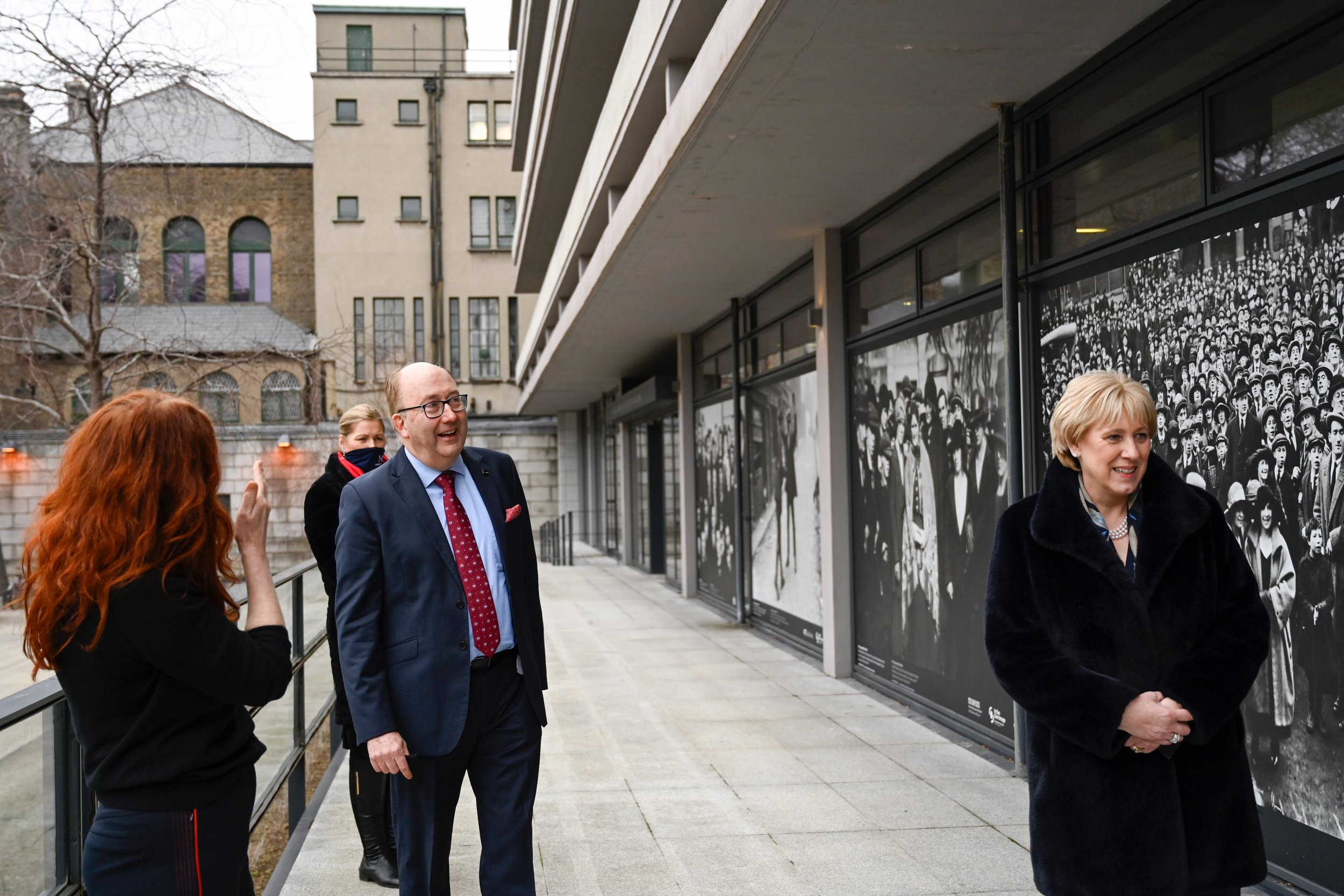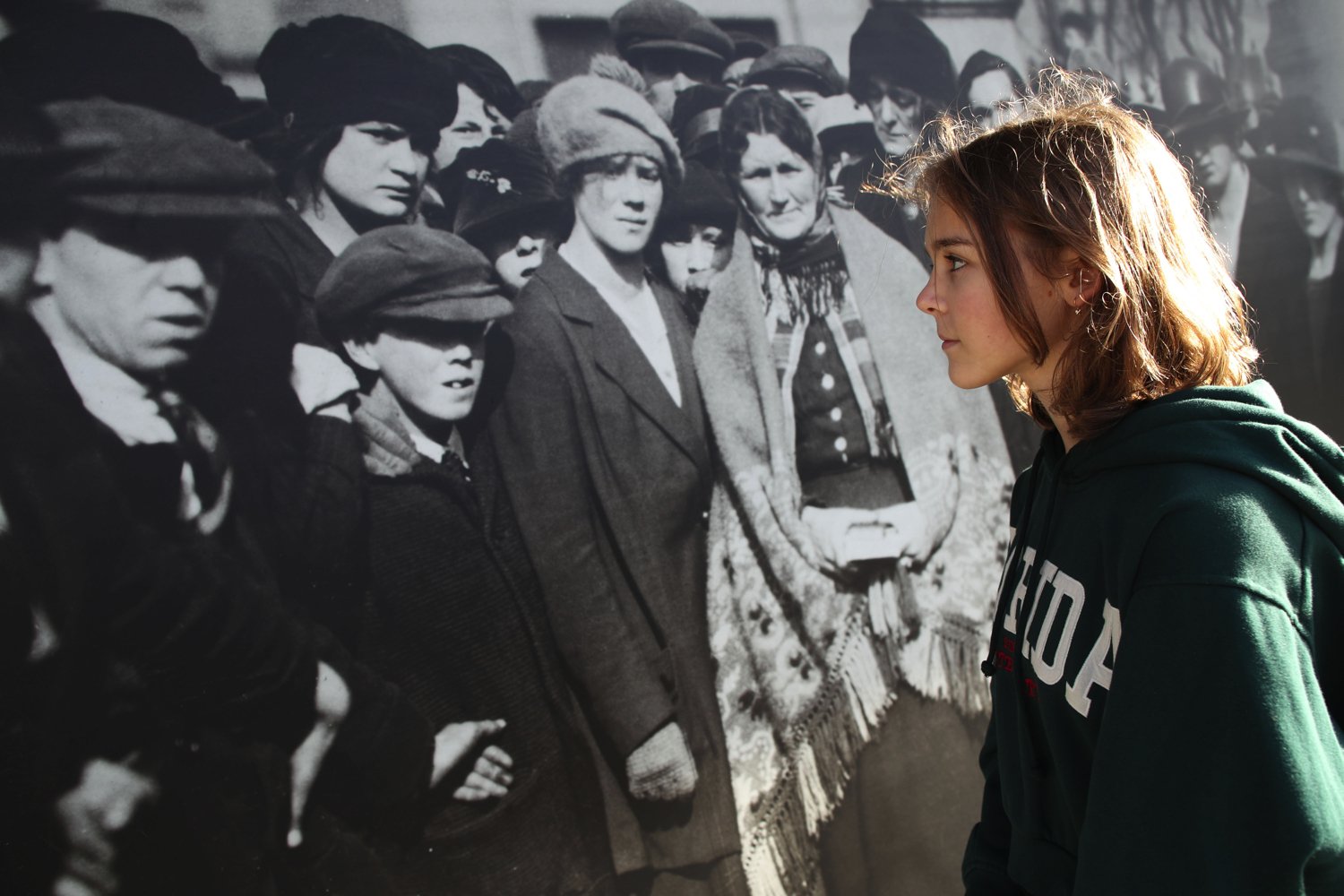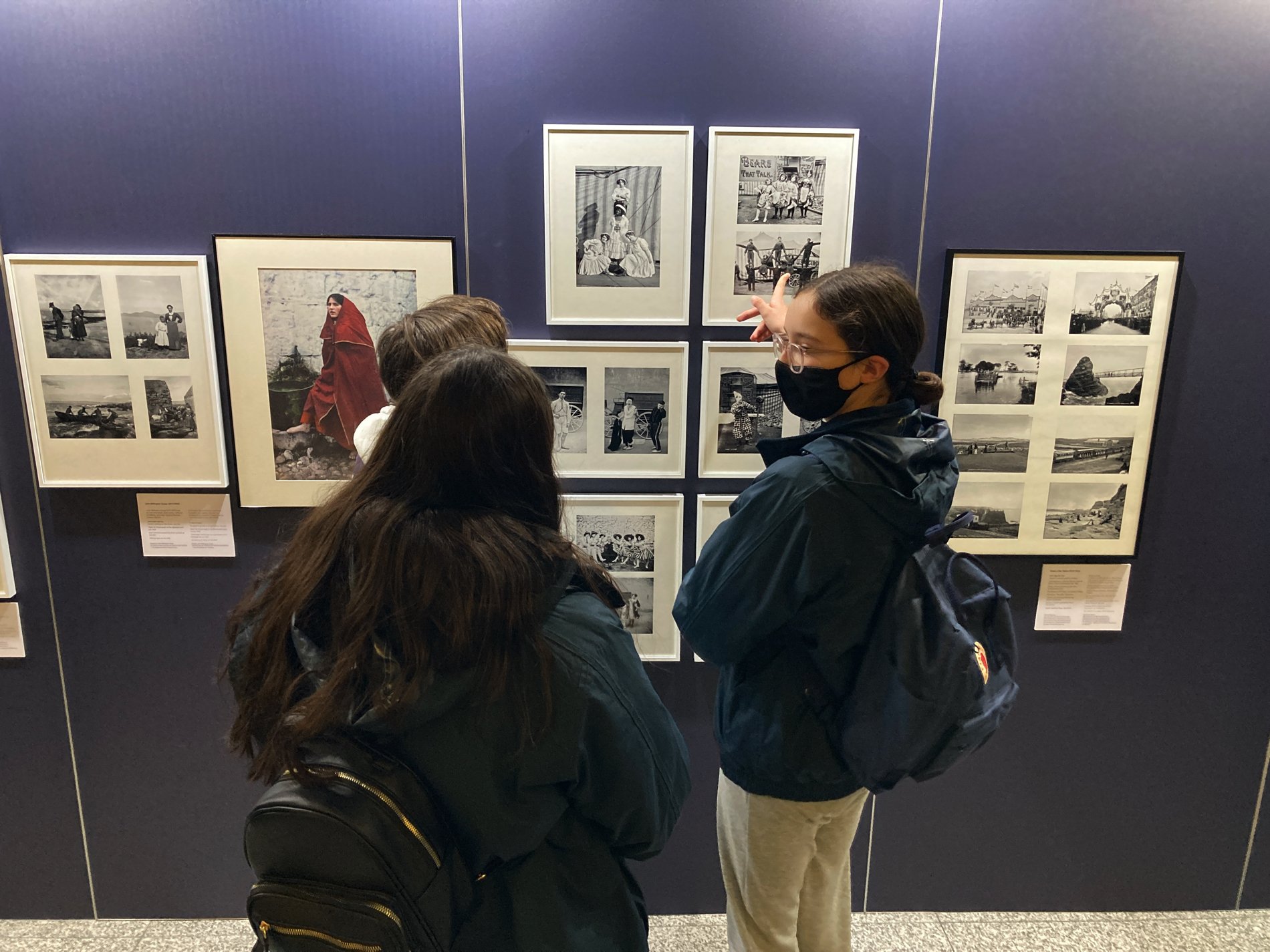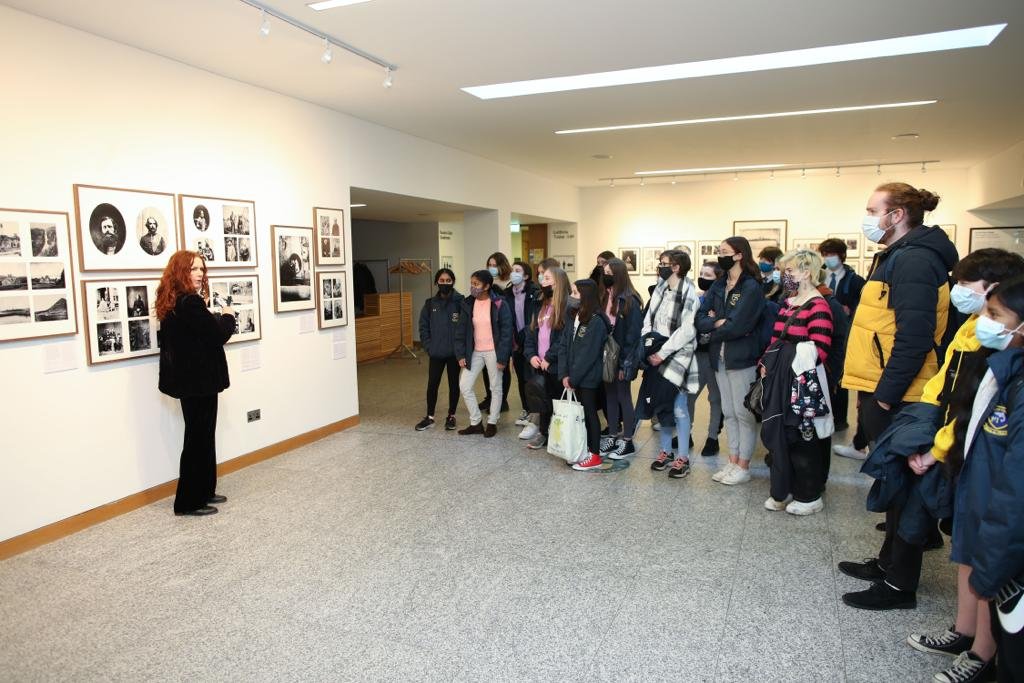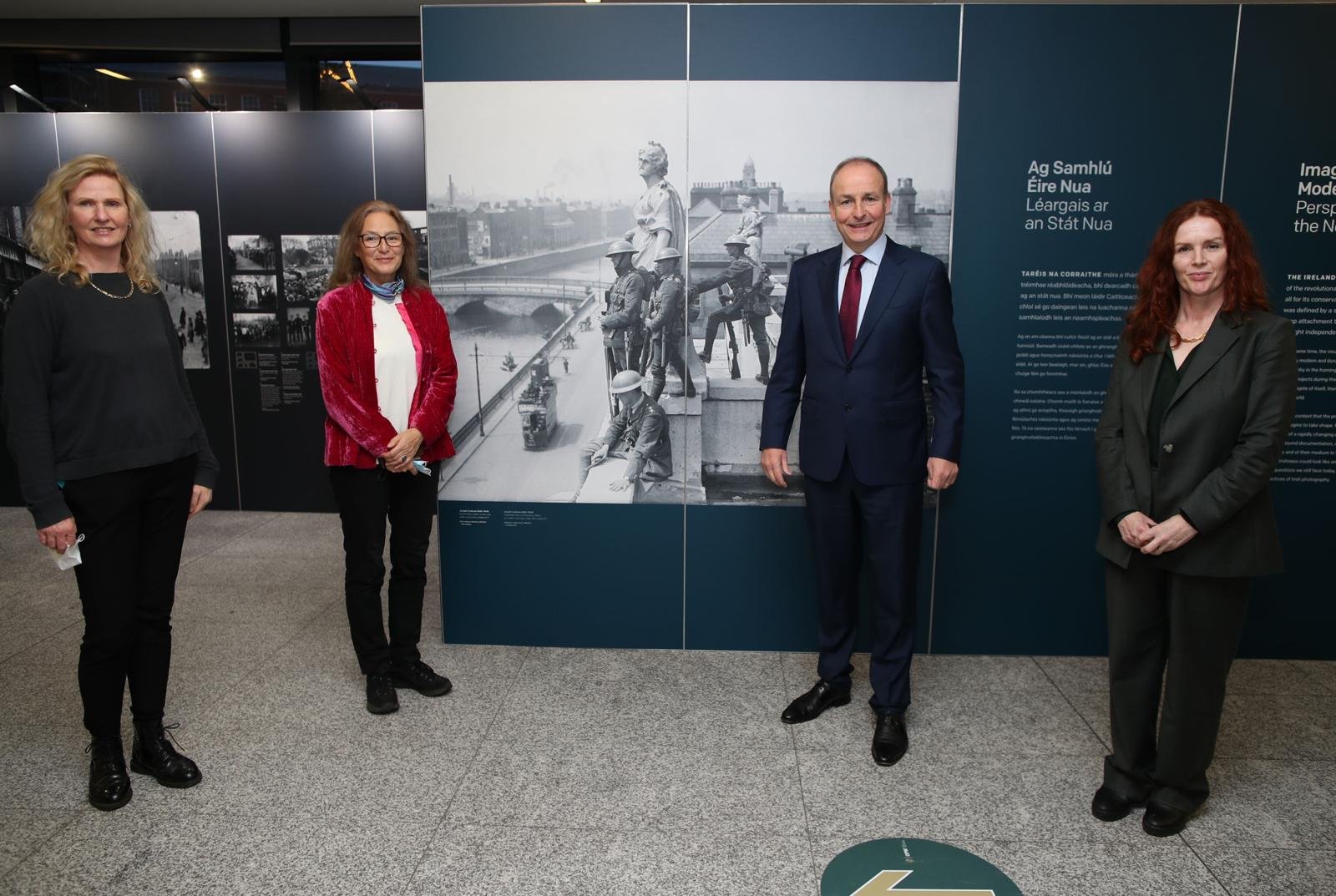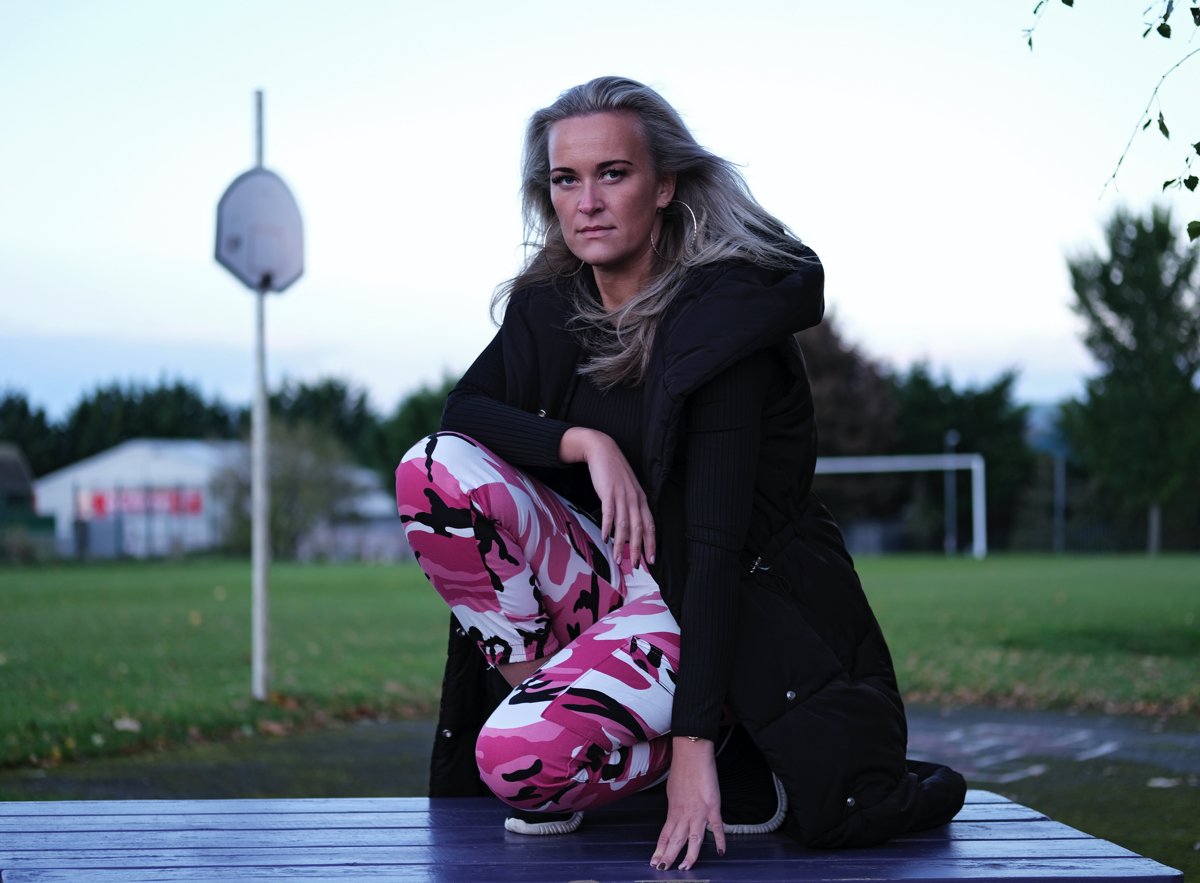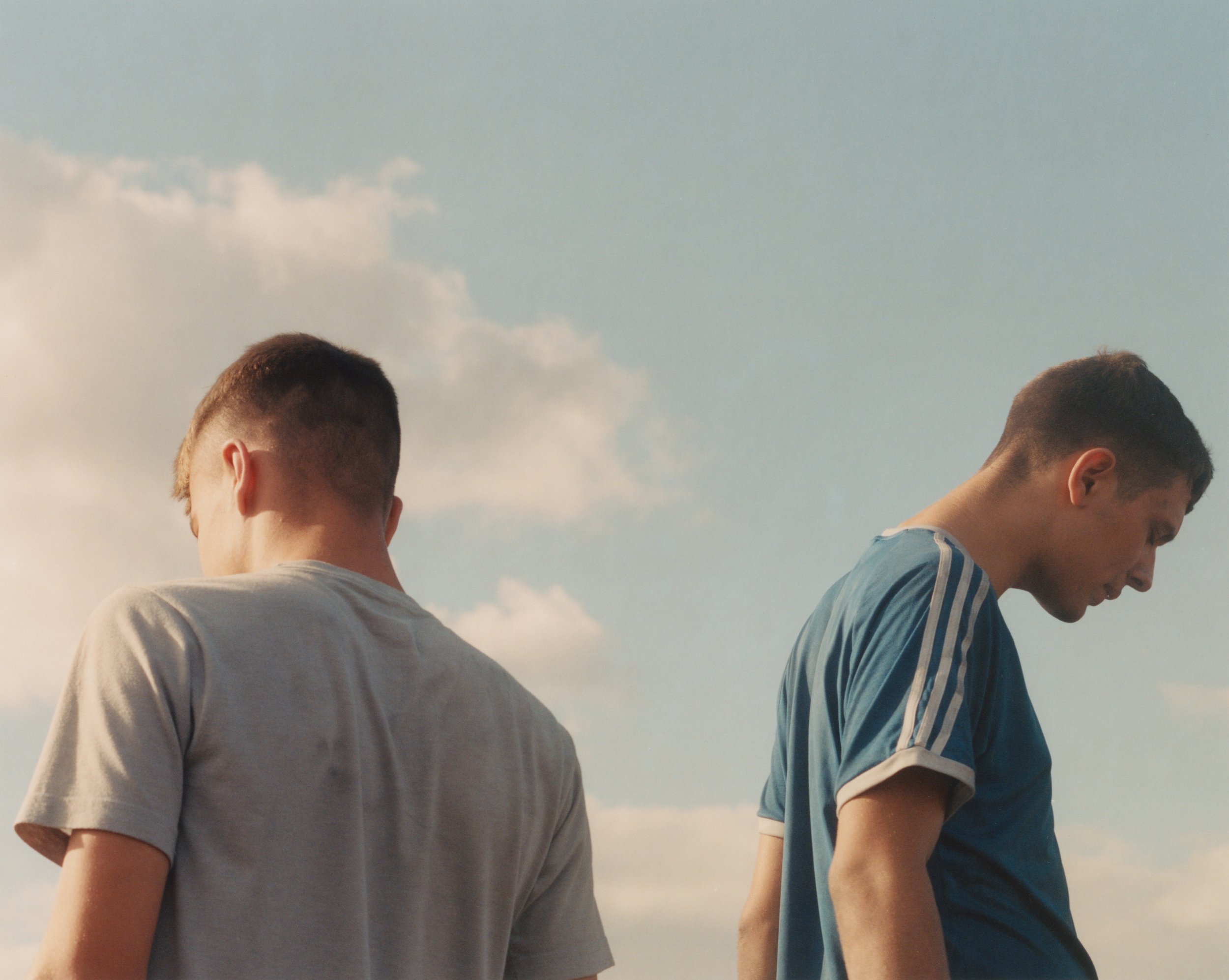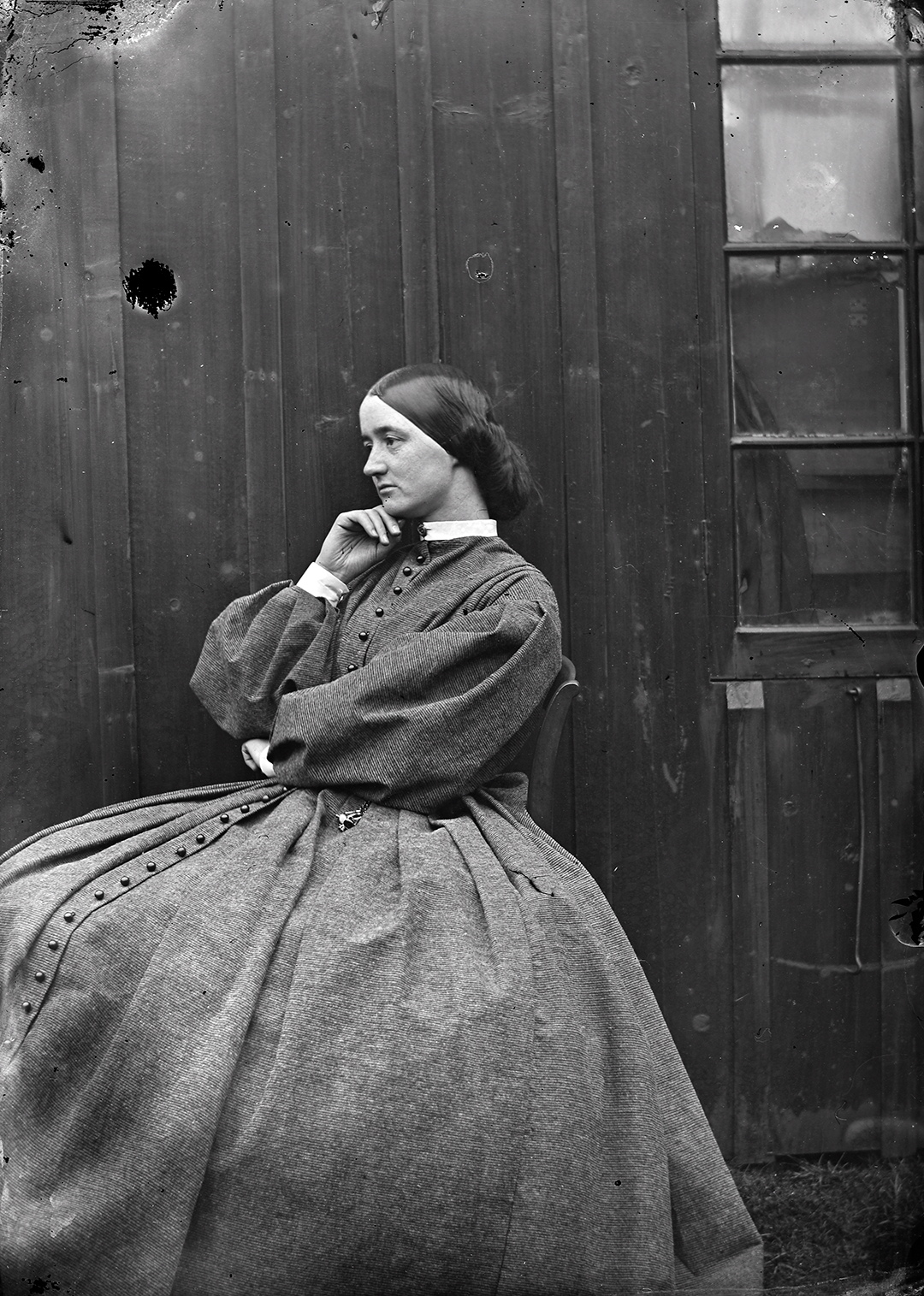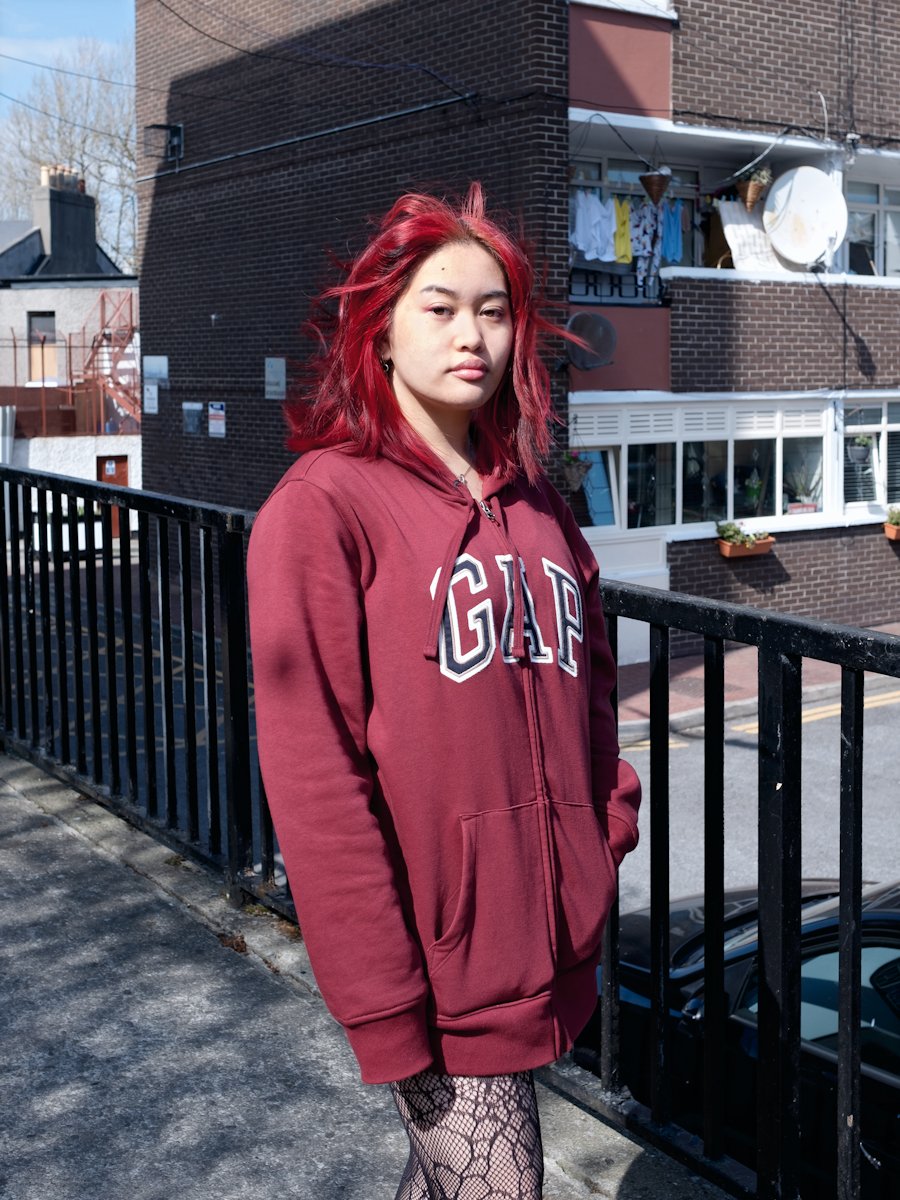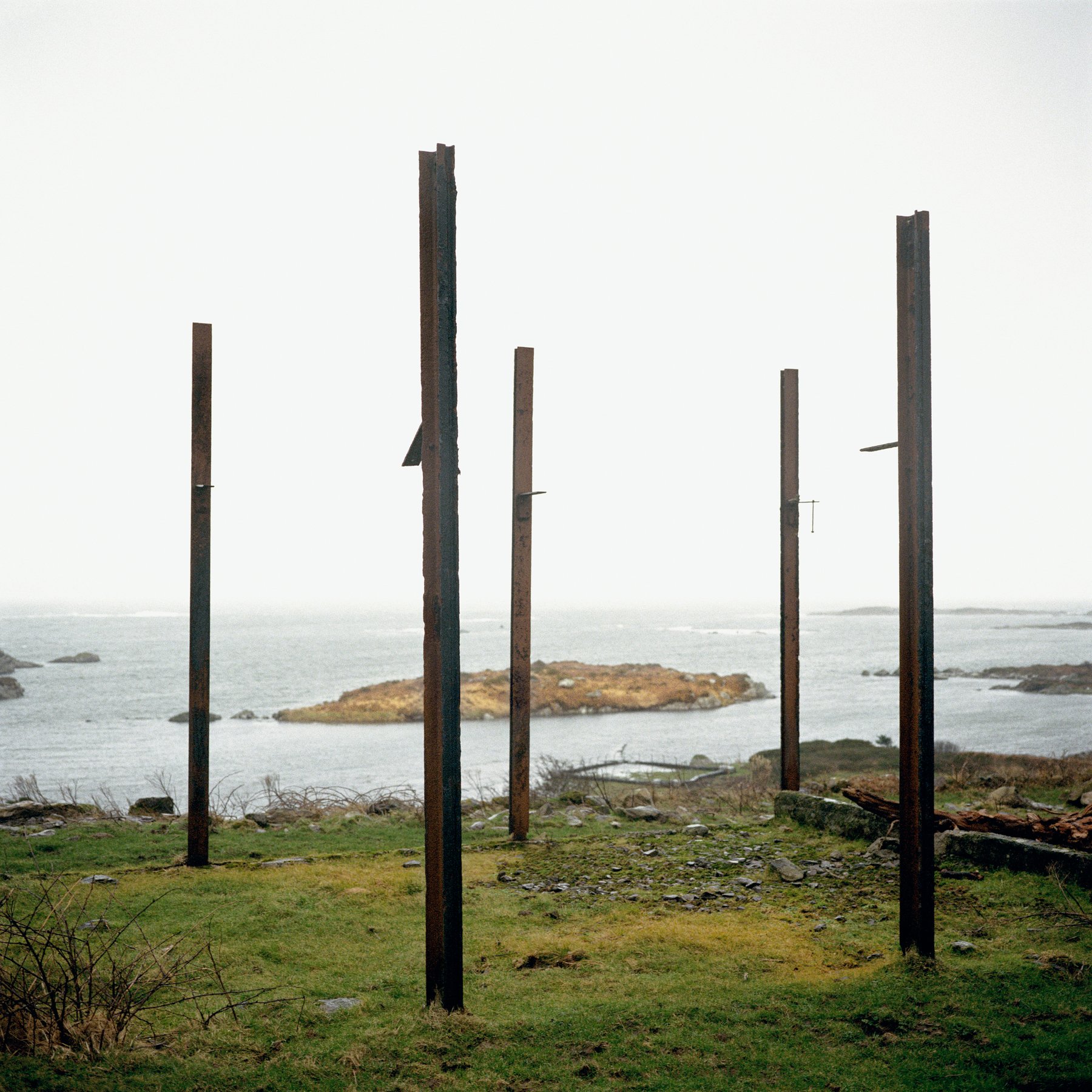Imaging Conflict: photographs from the revolutionary era Ireland 1913 - 1923
A collaboration with the National Museum of Ireland, this exhibition is part of the Museum’s contribution to the Decade of Centenaries commemorations and is part of In Our Own Image - photography and Ireland 1839-now, a year-long centenary programme surveying the role of photography in recording, representing and shaping Irish cultural identities.
Imaging Conflict will run at the National Museum of Ireland Decorative Arts & History at Collins Barracks from 14th October, 2022 until 2024.
Photography by local citizens
Imaging Conflict explores how technical advances in photography have transformed the way we view conflict and consume information. This image was taken by a member of the public during the exhumation and re-internment of individuals who were executed by the State between 1922 - 1923
Imaging Conflict will display 150 images and five original photograph books from the National Museum of Ireland’s collection relating to the Irish revolutionary era of 1913 – 1923, as well as images of Irish men and women in conflicts overseas. The majority of these images have not been on display to the public before.
In this period, photography became more accessible due to advances in technology meaning that this became the first Irish revolution in which members of the public played such a key role documenting. Consequently, the varied formats – eyewitness snapshots, memorial cards, post-mortem photography, press photographs and staged battle scenes – provide a nuanced perspective of the period.
Imaging Conflict will also examine the production and consumption of photographic images in conflict situations and how they can be used as propaganda.
““One of the key objectives of the Decade of Centenaries commemorations is to promote a greater understanding of this period of our history, and how it gave rise to very different narratives and memories. This new exhibition provides a valuable insight because it’s made up of everyday images, many of them captured by members of the public.””
Every day life during the War of Independence in Ireland
Explore images of daily life taken by citizens living through one of the most pivotal periods in Irish history, at our collaborative exhibition 'Imaging Conflict: photography from revolutionary era Ireland 1913 - 1923' at the National Museum of Ireland.
““We are delighted to partner with the National Museum of Ireland on this exhibition. It brings together ‘official’ perspectives with images by citizen photographers to reflect on the pivotal role photography plays in shaping our understanding of history as it unfolds .”
”
“ “It’s fortunate for us that this extraordinary period of our history coincided with the advance of photographic equipment. Seeing the period through the eyes of ordinary people captures the imagination in a special way. The exhibition also explores how images are used in periods of conflict to manipulate public opinion, something which is as relevant in war time today as it was 100 years ago.””
The National Museum of Ireland’s Curator of Military History, Brenda Malone, and Librarian and Photo Historian, Dr Orla Fitzpatrick, are the co-curators of the exhibition. Imaging Conflict will run at the National Museum of Ireland Decorative Arts & History at Collins Barracks until 2024. Admission is free.
In Our Own Image Programme
Our year-long landmark programme of In Our Own Image features exhibitions, online programmes, installations, events and education programmes that serve to establish the canon of photography in Ireland, from the earliest pioneering works through to a survey of contemporary photography by Ireland’s acclaimed photographic artists. Over the period of 12 months, the exhibitions and publications combine to examine how photography has recorded and shaped diverse cultural identities in Ireland. Innovative public art and online programmes invite audiences to contribute to conversations around what it means to be Irish today.





